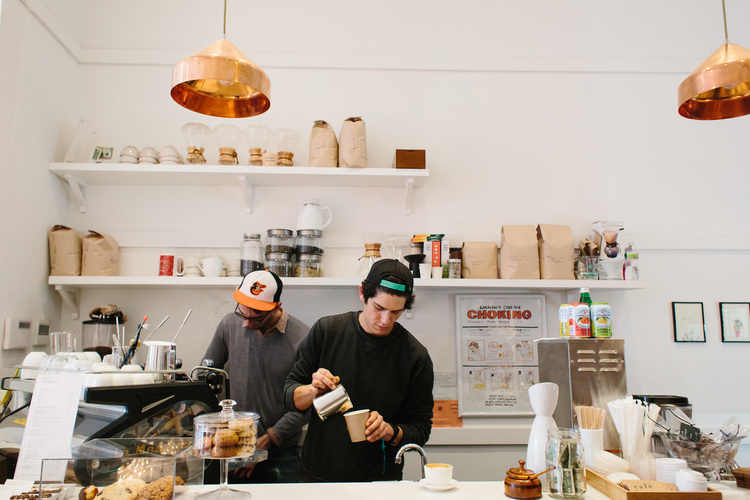Costa Rican breeze treatment farm Saraca Manor Solar Fine Coffee Bean Flavor, taste and aroma description

For professional baristas, please follow the coffee workshop (Wechat official account cafe_style)
Costa Rica West Velly Monte Brisas-Salaca Natural
Costa Rican breeze treatment farm Salaka Manor Sun Flavor
Flavor description:
Rich hot fruit notes, plums, brown sugar,
Frankincense, sweet and juicy sour, smooth taste and lingering finish.
Coffee has been rooted in Costa Rica for more than 200 years.
Although the land area is only the third to last among the producing countries in Central America.
But it is an indispensable and important role.
At present, the total population of Colombia is about 4.5 million, but there are as many as 400 million coffee trees.
Coffee exports account for 25% of the country's total exports.
According to local statistics, about 1% of the population is involved in the coffee-related industry chain.
It is not too much to say that coffee has changed the standard of living in this country.
Costa Rica has a unique natural environment
Fertile volcanic ash, mild and suitable temperature, and stable and abundant rainfall
Sufficient sunshine time during the day and significant temperature difference between day and night
It is one of the reasons why coffee has become one of the main agricultural products in Colombia.
They also produce different grades of coffee and raw beans.
From commercial parity Arabica beans
To the coffee raw beans from the Outstanding Cup Coffee Competition (COE)
There is also a palace-level geisha coffee variety (Geisha).
In addition, various post-processing methods are not clear, yellow, red and black.
The dazzling list is too numerous to mention.
The traditional classification method classifies Costa Rica into seven producing areas.
From northwest to southeast
Along with the inland central plateau
Western Valley (West Valley), Central Valley (Central Valley),
Tarasu (Tarrazu), Sanshui River (Tres Rios), Eurosci Orosi,
Brenka (Brunca), Duli Alba (Turrialba)
Some of them may be familiar to everyone in Taiwan's coffee market.
But with the evolution of boutique coffee
The norms of large producing areas can no longer satisfy the curiosity of lovers chasing high-quality coffee.
Resulting in more and more microzones.
Trace batches of small estates were unearthed.
Everyone's taste is not necessarily what they like.
You can consider buying a small amount and trying different baking degrees.
Soy beans in an explosion
Drop the beans at the end of the explosion.
Drop the beans from the end of the first explosion to the second explosion.
Touch the beans under the second explosion.
Put the beans into the second explosion for 10-15 seconds
The second explosion of dense beans
I hope you bakers can find a more favorite flavor.
*
There's something I need to explain to you.
Coffee beans are agricultural products.
Will vary a little from year to year due to climate change.
If you feel a little different, please forgive me!
Consider other coffee beans next time.
*
The greener the appearance of raw beans, the more moisture.
During the baking process, if the temperature drops too low during an explosion, it may not be cooked enough.
It is recommended to reduce moisture before baking (can be insolated for a few days or use a dehumidifier)
The more whitening parts, the less moisture.
*
Some coffee beans are emerald green and have more flavor after baking.
Some are whitening and taste better after baking.
There are many skills in the baking process.
The same degree of baking but different curves of time and temperature
The taste is also slightly different, and everyone's favorite flavor is not necessarily.
You can try different baking degrees to see which one you prefer.
Important Notice :
前街咖啡 FrontStreet Coffee has moved to new addredd:
FrontStreet Coffee Address: 315,Donghua East Road,GuangZhou
Tel:020 38364473
- Prev

Introduction to the characteristics of Costa Rican coffee bean honey treatment what is the difference between black, red, yellow and white honey
The quality of the selected sunburn method of honey treatment is difficult to control, while the water washing method consumes a lot of water, with an average of 10-20 tons of water per ton of coffee fruit to produce about 200 kilograms of coffee beans, which the producing countries that are not rich in water resources cannot afford. In the 1990s, taking advantage of the unique dry climate, Brazil invented peeling and tanning.
- Next

Guatemala San Felisa Manor Tibica tangerine honey treatment boutique coffee bean flavor taste aroma
For the exchange of professional baristas, please follow the coffee workshop (Wechat official account cafe_style) Guatemala Santa Felisa Typica Orange Honey Chateau San Ferrisa de Guatemala Tibica orange honey treatment flavor description: sweet candied fruit, dried grapes, hazelnut, caramel, cream and molasses of the sweet country of Guatemala (Guatemala) Achanan
Related
- Detailed explanation of Jadeite planting Land in Panamanian Jadeite Manor introduction to the grading system of Jadeite competitive bidding, Red bid, Green bid and Rose Summer
- Story of Coffee planting in Brenka region of Costa Rica Stonehenge Manor anaerobic heavy honey treatment of flavor mouth
- What's on the barrel of Blue Mountain Coffee beans?
- Can American coffee also pull flowers? How to use hot American style to pull out a good-looking pattern?
- Can you make a cold extract with coffee beans? What is the right proportion for cold-extracted coffee formula?
- Indonesian PWN Gold Mandrine Coffee Origin Features Flavor How to Chong? Mandolin coffee is American.
- A brief introduction to the flavor characteristics of Brazilian yellow bourbon coffee beans
- What is the effect of different water quality on the flavor of cold-extracted coffee? What kind of water is best for brewing coffee?
- Why do you think of Rose Summer whenever you mention Panamanian coffee?
- Introduction to the characteristics of authentic blue mountain coffee bean producing areas? What is the CIB Coffee Authority in Jamaica?

